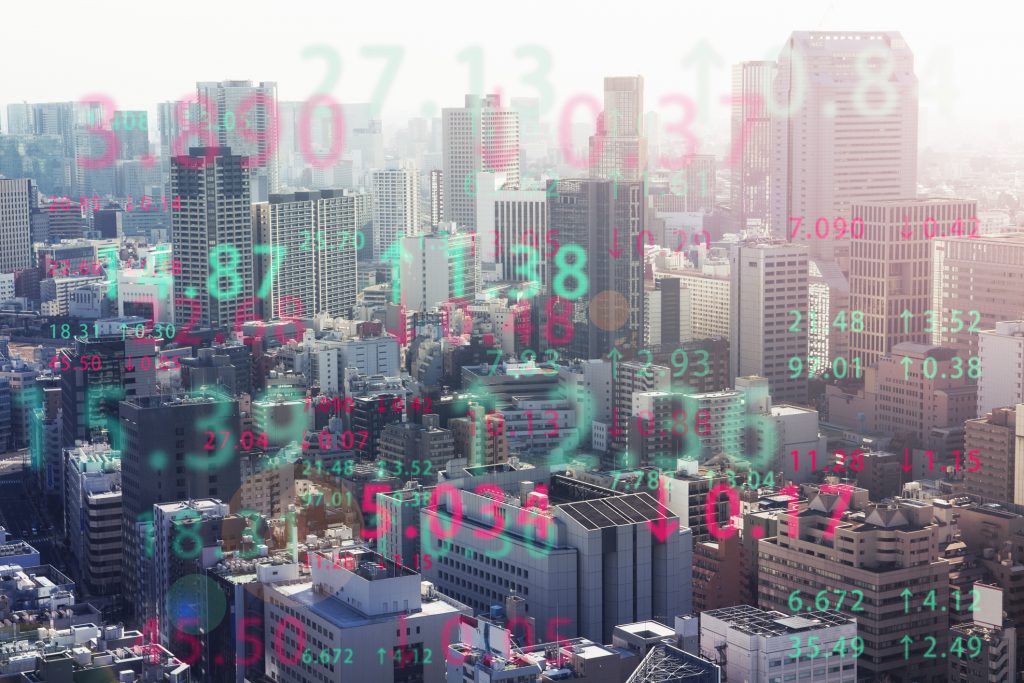With so much happening these days — constant news updates, evolving health guidance, and uncertain forecasts — it sometimes seems like there’s only one thing we can count on: numbers.
Count on numbers
Numbers are crucial and constant, appearing throughout just about every facet of life. We rely heavily upon them to make sense of our world. It’s hard to understand the extent or significance of anything without the firm boundaries that numbers provide.
It is numbers that have allowed us to unlock so much of the world around us. “Once we invent numbers, they allow us access to these patterns in nature that we wouldn’t have otherwise,” said anthropologist Caleb Everett. From Einstein’s famous E=mc2 equation to the circumference of a circle, there is so much about the world around us we’ve discovered through the use of numbers.
Among the sequence of numbers, the invention of zero—as a numerical symbol and the absence of amount—is considered one of the greatest inventions in history. According to Peter Gobets, secretary of the ZerOrigIndia Foundation, or the Zero Project, zero is “the cornerstone of modern mathematics and physics, plus the spin-off technology.”
Everett explains the significance of numbers to the Smithsonian Magazine: “Numbers seem to be a gateway that are crucial and necessary for these other kinds of lifestyles and material cultures that we all share now but that at some point humans didn’t have.”
We have whole professions focused on numbers like accounting, economics, and physics. Mathematical Platonism, Mathematics, and Number Theory are studies devoted to the philosophy and study of numbers. Whole languages are based on numbers. Our computers speak the language of numbers. They run on code, a language made up of the most basic binary components—ones and zeros. Those county symbols help us with everything from telling time, noting the date, discussing the weather, describing characteristics like size, worth, age, and so much more.
Numbers so permeate our lives now that some people fear living with or without them.

When the numbers don’t add up
Right now, the world is in chaos with the onslaught of the coronavirus, a global pandemic unlike anything we’ve seen in recent generations. One of the few ways that we can get a tiny measure of control is by watching the news on the virus. It feels helpful to know where the virus is centralized, how quickly the infection rate is multiplying, what population is being most affected.
But with every update, the news and numbers being reported fluctuate. There are simply so many numbers out there, with new ones coming out within minutes of each other. How can you tell which to trust? Top-down—from heads of government to social media platforms to local news—everyone is struggling to provide accurate statistics and facts.
During a crisis like the global pandemic we are experiencing with COVID-19, knowing the numbers becomes more important than ever. Looking up how close the virus is to your location, the current number of cases, how long it will take to flatten the curve, the economic effect the virus is having, and more are all numbers we’ve come to rely upon each day for a sense of security.
When the numbers are wrong or contradict each other, our inability to discern the truth can be frightening. Does the virus live on surfaces for six hours, nine hours, or 36 hours? Each news source seems to report a different absolute truth
From the Center for an Informed Public in Seattle, WA, sociologist Emma Spiro, and crisis informatics researcher Kate Starbird comment on the spiraling situation of misinformation. “Historically, a lot of misinformation is a byproduct of the natural response that people have to a disaster event. There’s a lot of uncertainty about the impacts of the event and what actions we can take to respond to it.” Sharing information is an outlet for many people’s anxiety—an action that we hope will help our loved ones. But when there is a crisis, our desires to help can cause an influx of panic sharing information not rooted in fact.
Behind the numbers
Measures to stop these misleading facts are being taken across the board. NPR reports that Facebook–who, along with Twitter have seen a surge of false and harmful statistics–is relying heavily on a network of 55 fact-checking partners to constantly monitor misinformation. Other organizations like the Department for Culture, Media and Sport (DCMS) and the UK’s National Health Service (NHS) have created task forces to challenge bad information. For the swirling cauldron of numbers you wade into every time you browse today’s news, here are a few additional resources you can visit to fact-check the truth.
- A helpful article covering many of the circulating coronavirus myths: https://www.livescience.com/coronavirus-myths.html
- A website vetting over 140 sites across the U.S., U.K., France, Italy, and Germany who are publishing false information: https://www.newsguardtech.com/coronavirus-misinformation-tracking-center/
- A site focusing on resisting strategic misinformation, promote an informed society, and strengthen democratic discourse: https://www.cip.uw.edu/
At Sogolytics we understand how valuable the right statistics are and how badly the wrong numbers can skew understanding. Sometimes to find the truth you need to look for the results yourself. That’s why Sogolytics is partnering with healthcare organizations to aid them in finding the right numbers and answers to address all of the questions presented by the coronavirus. To take advantage of free timely templates available for your use, or to apply for a free account upgrade, connect with us.
Looking for better numbers?
Keep your sense of humor with Numbers in the News, a fun and upbeat segment on our weekly Facebook Live show — SoGoLive! on Fridays at 1 ET.






